By Juan Manuel Sancho Moronta
The author develops his experience in the implementation of a program of preventive maintenance and repair in a factory of “two-piece” type containers, built with the DWI technique. Currently this industry is the most cutting-edge technology in the metal sector. Due to this, there is not yet a well-defined Spanish lexicon, which is why its original English designation is used in many cases.
The program that this work develops, is defined in two parts and is based on information provided by Metal Box UK and limited knowledge of the methods used by Continental Can for “two-piece” packaging lines.
Objective
It was implemented in 1983 with a well-defined objective: “Maximum Productivity, High Quality of packaging and Minimum Waste, at Minimal Cost“. It was carried out on a factory of boats for drinks located in Spain.
A little history
During my training at Continental – in the summer of 1975 – and at the end of my stay, courtesy of CCCo. I visited the Van Nuys factory, for two-piece containers.
At that time, Continental had six plants for this packaging format. In all they applied the program of “PM and Repair”, (Preventive Maintenance and Repair). For their application, they received through Technical Engineering of Chicago the technical information, manuals for their application, model of “check list”, and the administrative process of the program, according to the Mc Bee system of Litten Industries.
This efficient administrative process, for the monitoring and constant improvement between the plants in the application of the “PM and Repair”, as well as the stock control of spare parts, first line, second line or “overhaul”, were in the Central warehouse of Chicago.
As I said, Continental in 1975 had six plants operating with two-piece containers. One of the little information that was provided to me in Vab Nuys corresponded to the percentages of means used by “PM and R”. in the different machines that make up the two-piece line.
Percentages
Trainers = l5% included “wall ironing tool pack”
“Ironing ring and punch”.
Conveyors = 7% mass, tape, air, etc., full line.
Ovens = 8% horizontal and vertical
Press = 5.5% in special “copping die drawn”
Decorators = 4.9%
Washing machines = 2.5%
Trimmers = 1.8%
Balers = l.4%
Palletizers = l.2%
Flanges = 0.9%
Others = 3.3%
Total 51.5%
Note:
For this reason, the machines that need more assistance of “MP and R.” correspond to the “bodymakers”, so of the six installed by line, one is in maintenance, applying “Chek list”, change of tooling, etc. .
The Van Nuys plant made a fascinating impression on me. The five lines were operating 24 hours 7 days a week with 211 / 209×413 (65 / 62×122) aluminum containers from Alcoa. This can give an idea of the technical issues that could be generated each day.
Consequently, a system of preventive maintenance and repair was absolutely essential.
FIRST PART
Spanish manufacturing plant
It was dedicated to two-piece containers (211 / 209×413) in Hojalata de Altos Hornos de Vizcaya.
New construction and engineering for installation of two-piece lines. The turnkey contract for the installation, commissioning and training equipment for its operation was established with Metal Box.
(Summer 1982)
As a result of a change in management, the new director of the division, proposed me to join the team. My main task was to be interested in how the M. P and R program was established, since this was the basis for the proper functioning of the plant.
At that time the Production Manager, I commented the difference of location of the various workshops Mechanic, Electrical / Services and Maintenance Workshop rings and punches, as these in the plants of CCCo are located so that they receive natural light as generous as possible and also because of the work flow generated by this type of manufacturing.
Likewise, the training room requires adequate attention, with the specific material: manuals, projector, etc. It must be located as far away from the level of noise that occurs in this type of plants.
Technical Information of Metal Box for this plant .
Descripción del “Planned Preventive Maintenance”. Fases:
A)
- Introduction
- 2. Type of maintenance: First line
” ” ” : Second line
“” “: Third line
- 3. Maintenance data collection: “check-list”
B) Manufacturing: maintenance
C) “: lubrication
D) Packaging finishing: maintenance
E) “” “: lubrication
F) “” “: cleaning
G) Mechanical systems
H) “electric
1. Introduction
The machines used in the manufacture under the DWI technique, are built according to exact standards and very strict tolerances, they work effectively whenever the manufacturer’s adjustment rules are rigidly observed, and the material used, in this case tinplate, be accepted according to the established specifications. At this time the tinplate supplied by AHV did not meet the specifications for this type of container.
The failure of a main organ such as: the first operation press engine, or the line control system, can have disastrous effects on production.
The main purpose of a planned maintenance system in a DWI installation is to maintain the equipment, before failure or breakage occurs. It should be remembered that preventive maintenance and repair is a service that lends itself to production, in order to increase it. As a consequence, “maintain” is the source of income for your spending.
The purpose of this program is to present the maintenance system to all the workers and people in the plant. Show that it is flexible and can be modified, as they become more knowledgeable about the operation of the DWI installation.
- Types of maintenance
Front line maintenance .
This maintenance can be divided into two parts:
1ª.- Checks on the march. (Dynamics)
They can be made on any machine, while it is in operation, such as the recording of pneumatic pressures in the press or the quality of printing on the decorator.
2ª.-Static checks.
These are maintenance checks and adjustments, which can be made using the natural stops of the line, such as design changes in the decorators, or when a machine is stopped due to problems in a main organ.
These are simple checks, designed in the first place to provide an indication of the problems that may arise before the maintenance of the second line, and secondly to keep the production machines within specifications.
Second line maintenance
The same can suppose the stop of all the line to carry out the maintenance of the main motor organs or the arrest of non-main organs that do not significantly reduce the performance of the line. The maintenance period is preceded by the completion of the “first line” checks carried out by the previous team. This serves as knowledge of the line and to know the state of it, when it has been interrupted. Problems encountered during the “first line” checks are reflected in the fault report.
Third line maintenance
This maintenance includes the program to provide opportunities for the planning of the main maintenance and is designed to coincide with the semi-annual verifications to be made in the press, for example: the change of the multiple die
The line can be stopped for about 72 hours to carry out important technical work.
In this way, safety adjustments and updating work can be carried out gradually as part of normal production work, instead of causing an important alteration that is opposed to an efficient and continuous operation.
- “Check-List” of Maintenance.
For each machine there are check-lists of checks in which all those that are necessary during a given period are detailed. On this sheet we will proceed like this:
- A. Check all the checks that have been made.
- Satisfactory results will be indicated as follows: 0.
- Unsatisfactory results corrected at the time of inspection will be indicated: 00.
- Unsatisfactory results that will be corrected at another time will be indicated 000 in the “check-list”, which will be signed.
- Once all verifications have been completed, indicate the initials and date in the “check-list”.
Whenever possible, dimensional specifications will be included in it.
The fault reports will detail the specific work to be carried out and the spare parts to be used. If necessary, the spare parts will be correctly designated, including the part numbers.
Comments about the program
At the start of the start-up of the MP and R program, a series of anomalies was detected in the program, which came from the company that had developed the “turnkey” project.
The points and references of the specifications in the “chek-list” were not complete.
Neither were the specific procedures and tools provided for the data collection in the “chek-list”. The manuals of use in the field that facilitates this operation were missing
They kept excessively long periods of line stopping and did not facilitate the data collection periods in “chek-list” in relation to the units produced or work hours per machine.
Once these observations were corrected, a Program was established, taking part of it from M.Box and another from the knowledge acquired from Continetal .
The First Line Maintenance section was maintained, in which the type CCCo cards would be placed for each machine of the line. Also Static Checks were maintained .
Any abnormality detected, not repaired in this control, would be notified in the damage sheet to the mechanical or electrical workshop.
Tooling workshop
This workshop would continue its activity in accordance with the system installed by M.Box. (Similar to the one of CCCo) Its responsible takes care of his technical and economic administration for the toolings of DWI, establishing the recommended stocks, and the flow of the same dismissing the tools out of specifications.
From the control and consumption of the same by each of the “bodymakers”, important information is obtained for the knowledge of the state of alignment of the carriage carrying punches, and of the support box of the set of draw rings and the work of the dome.
SECOND PART
Stages for the Implantation of Preventive Maintenance and Repair in this Spanish company
1.) Participation of the Management
2.) Information campaign
3.) Organization of the MP and R.
4.) Results of the measurements and analysis
5.) Action plan
6.) Start-up
7.) Effectiveness control
8.) Development of MP and R .: “Check-list”
9.) Development of the “check-list” program
As estimated: For packages produced or by number of hours worked per machine.
10.) Determine new and more ambitious objectives.
Two-Piece Line . (November 1983)
Objectives: Maximum productivity, with high packaging quality and minimum waste, at minimum cost.
The necessary documentation is completed, such as operation manuals for the data collection in the “check-list” and the training of the mechanics for its application.
The frequency of the “check-list” takes place, with the help of the line’s computer, for each machine of the line, according to the production in millions of manufactured containers.
This program, as we already mentioned, is flexible and according to the knowledge and experience, each year at the time of making the budget for the following year, the check-up times will be adjusted, as well as the points to be checked.
Procedure and Responsibilities.
A.) Purpose :
Description of the program procedure, the persecution and the determination of MP and R.
B.) Procedure:
1.) Shift Chiefs.
A.) Prepare the annual program for the preventive maintenance of the equipment.
B.) Prepare each month, with the planing and list of the computer of line, the “check-list and data sheet” necessary and the corresponding forms to the designated machines. Noting the date, the number of the plant and the number of the line.
C.) Request Production help, to determine the specifications and tolerances necessary to complete the “check-list”, if necessary. qa
D.) Start the checks of MP and R. in the equipment that requires it during that month, completing all the points required in the “check-list”.
E.) At the end of the “check-list” of the assigned team, the form “Notice of MP and R.” will be made. which is a report of the situation.
F.) Send a duplicate of the “check-list” and two copies of the form cited to the head of Mechanical / Electrical Maintenance. Annex a work order to repair the parts that require attention and repair by the mechanical / electrical workshop.
G.) Save the copy n. 1 of the form “Notice of M: P. and R. “with the” check-list “for the file and its pursuit. Send copy 3 and 4 to the Production office.
H.) Start the corrective action in the rejected parts that do not need machinery or expensive parts, subsequently informing the Head of the Mechanical Workshop.
L) At the end of the work order, review the repairs with the Head of TM Sign and date, certifying in the indicated manner, the adjustment of the parts and the timing of the machine according to the specifications.
J) Maintain the planing of the program to date.
2.) Head of Mechanical / Electrical-Services Workshop.
A.) Will accept the charges for labor used for manufacturing in MP and R.
B.) Repair the parts noted in the “check-list”.
C.) It will record in the last column of the “ckeck-list” the new dimensions and their adjustments. Review the work with the shift bosses when completing repairs.
D.) Mark (“This has been repaired”) in the form “PM and R Notice.” Sign and date. He will send copy n.2 to the shift manager.
E.) It will keep the “check-list” in the file for a period of three to four years.
F.) The pursuit will follow with Production and the adhesion of the departments to the program of MP and R. The boss of TM / Ele. will have the obligation to officially notify the Production Manager with a copy to the Director of the Plant, of the lack of adherence to the program of MP and R., including the corrective action, giving explanation, justifying and possible disqualification of the line.
3.) Production.
A.) Work and continue the persecution with the shift leaders for the effective application of the PM program: y R.
B.) He will sign copy 3 of the form and send it to the TM manager authorizing the budget to carry out the work.
C.) It will keep the copy 4 for file and its persecution
D.) Follow the persecution and help manufacturing in the development of the program.
E.) Periodic audit of factory procedures and local verification of the equipment against the latest factory data: Productivity, Quality, and Waste.
F.) Review the reports and collect the data and the duration of the wear, in the tooling or motor parts of the equipment.
G.) Recommend the frequency of changes and / or changes in tolerances where the data indicate that a change is practical, according to experience or technical information, than the Technical Department. or M.Box facilitate for this process.
4.) Forms.
1.) “Check-list and Data-Sheet”
Numbered for each of the machines that make up the line.
2.) Form “Notice of MP and R”.
3.) Account number for the hours charges used in the “Check-list” inspections.
4.) Account number for cost charges: Spare parts and labor in repairs.
Use of the Planing of Preventive Maintenance and Repair .
The planing for the MP and R. program is to give visual information about the program. The planing will be made so that with little additional work it is relatively easy to use it.
The planing will show the program a day, determine the frequency of the checks of each machine throughout the year. This will take into consideration that some machines should be checked more frequently than others.
The planing can be maintained according to the computer’s list of the line, which will outline the machines that must be checked. The cards of different colors, will indicate the type and number of the machine in the planing, informing when the checks were made and when they were finished.
Green Cards
They will be used to indicate that the checks have been carried out successfully.
Yellow cards
They will be used to indicate the need of a later work in the machine and the estimate of time to use, as the necessary parts for its repair.
Red cards
They will be used to indicate that the machine should be checked and programmed to stop it, establishing the stop time for this case.
************************
Training for Operation
DWI Two-Piece Line.
All the equipment of the line and everyone involved in the production process must be trained for the MP and R.
It must be done in the different equipment that was programmed according to the computer program for this Line.
l.) Distribute “Procedures and Responsibilities”.
Take time to discuss them in their entirety.
The procedure for promoting the MP and R program is based on the aforementioned relationships (ref C: C: Co) Engineering will provide the recommended maintenance points, tolerances and the frequency program. These instructions cover the basic steps of the responsibility that will cover in detail as they are treated.
2.) View list of the line computer and frequency program.
Responsibility can be distributed to each Shift Leader per month.
Each time the list is received from the line computer, the shift manager will determine which of the machines are programmed for the MP and R. during that month, in particular. The machines that are to be determined by the annual frequency program. The machine to be checked will be marked with red cardboard in the planing of the program.
3.) Show a copy of a Check-List and Data Sheet.
After the shift manager has determined which machine should be checked in that month, he will prepare the “check-list”. Fill in the date, the number of the plant and the line number, giving the appropriate orders for its realization. The necessary information should also be noted in the specifications column with the help of the plant’s engineering when necessary.
4.) Show the “check-list” and note the cases, such as: specifications, references, tools, instructions etc.
The PM and R program will be identified in the audit listings. Each point that must be inspected, references, specifications and tools etc. they are facilitated by the company’s engineering and assistance from M.Box, and equipment suppliers. A few extra words of instruction with illustrations will indicate where and how the parts or sets should be inspected.
5.) Show a card and points, specifications, references and tools etc.
Later we will review each machine and each card, if there are questions we will answer them
CCC example
The cards form a 7×5 “book with easy-to-use rings by the mechanics. In the first pages of each book there is an index indicating all the cases that cover the preventive maintenance in said machine, a list of tools, calibrators, etc. needed to do the check-up and a list of the reference materials covering the Operations.
6.) Change the planing program, and put yellow cards
After a machine has been inspected the shift manager will cover the red card of the program planing with a yellow card, indicating at a glance that the machine is still missing and requires MP and R. It has already been inspected but still needs corrective action .
7.) Make a distribution of the “MP and R Notice” form
The shift manager will also prepare the “MP and R Notice” form. of the team (4 copies) This shows the plant, the month and the year. As well as the type of machine.
Mark (1)
In the box indicated that “checked and is fine”, if the checks of the machine are finished and do not need repair.
Will dial (2)
In the box indicated that “checked and needs repair” if the checklist shows one or two cases that require repair by the T. Mechanical / electrical. You will save a copy for your file. The shift manager will make a copy of the “check-list” and will accompany the copy n.2 of the form and will send it to T. Mecánico, if it needs repair, work order will also be accompanied, indicating the work that is required.
8.) Present a “check-list” with the copies of the forms n.1 and 2 as well as the 3 and 4
The forms will not be signed by the shift manager on this occasion, he will sign it when the work is finished. This we will see later.
Show the remaining copies n.3 and 4. Copies 3 and 4 will be directed by the shift manager and the Production office. The Production Manager, will sign copies n.3 and 4, copy n.4 is for the file, and n.3 will be sent to T. Mechanic, authorizing the budget of the work done for M.Py R.
For the DWI line, a total of annual hours of time allowed to do each one of the checks for the whole set of machines, distributed according to the frequency program for this year, will be estimated.
It will be included in the annual budget and in the account for labor and other concepts and in the labor used in data collection “check-list” of the Plant, where you have accumulated the corresponding budget to cover expenses .
Labor will only be charged for the time and the amount accepted, may not exceed the amount allocated for the recommended hours. The current repair and the costs of the parts have to be charged to the maintenance account or order mentioned. The corrective adjustments of machine etc. will be absorbed by the Manufacturing Department.
9,) Point out the last columns on the right side of the check-list.
The Chief of T. Mechanic, will repair the points marked “rejected” in the “check-list”, loading the repairs into account. The repaired points, the adjustments and tolerances of the new dimensions must be noted in the last column of the “check-list” after finishing the repairs. The Head of T, M. and the Shift Manager, review the repairs together and agree that the new dimensions and complementary parts are adapted to the specifications and timing of the machine.
10.) Show the copy of the form n. 2 completed and completed by the Mechanic.
The Head of T. Mechanical / Electrical, will sign and date the form, certifying the new dimensions listed. The Shift Manager will sign and date the form, certifying the adaptation of the complementary parts and the set-up of the machine, in accordance with the specifications. The new dimensions will be noted to determine the amount of wear between checks, the “check-list and data sheet” should be kept for a period of 2 to 4 years
11.) Pay special attention to this POINT.
The shift manager removes the yellow card from the planing and places a green card, indicating that the corrective action is over.
The head of T. Mecánico will be obliged to officially notify the Plant Manager of the lack of attachment to the MP and R program (including the corrective action), giving the explanation and justification of non-attachment
12.) Replace the parts before they wear out.
The plant data in this program will serve a multi-objective function.
A.) .- These will be used to audit the procedures in the plant and make certain checks that will determine the condition of the equipment, comparing it with the “check-list” in the parts and tools.
B.) – It will help the engineer to determine with more exactitude the duration of wear on the parts and tools.
C.) – Determine where you can decrease or increase the frequencies of equipment check, to ensure optimal quality and efficiency with minimum waste at the minimum cost.
D.) – The data corresponding to labor and other concepts will facilitate the preparation of the budget for each year with greater precision. Which will be one of the rules to assess its effectiveness.
Since the results of the MP and R program depend on the correct application of all the check inspection points, it must be described on the cards where and how we should check each machine. Some operations are simple, and they explain themselves. Others are more complicated operations and certain analyzes may be required. However, most of them are not unknown, but if there is any doubt or if you have any questions, you can expose them.
*********************************
Why MP and R.
The problems that occur daily in this type of manufacturing are so varied that to deal with them in unforeseen situations, cause people a stress that if repeated very often can lead to associated medical and psychological disorders.
Time is not elastic nor the inexhaustible energies. The more tasks and more objectives that have to be organized, the greater the difficulty in making a decision and the inevitable renunciation of other options. If we want to do something new, we will have to stop doing something we are doing.
So:
Preventive maintenance and repair help in a very efficient way to overcome these and other problem


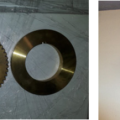

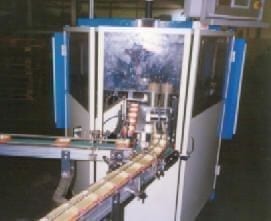
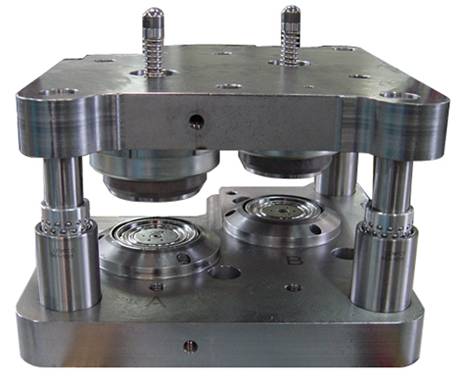
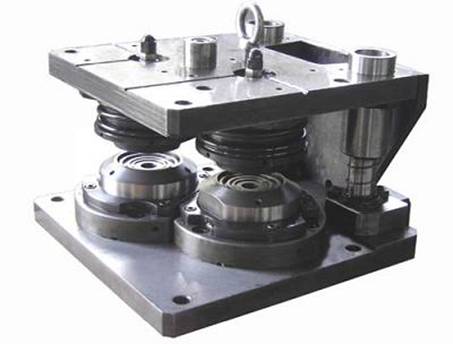
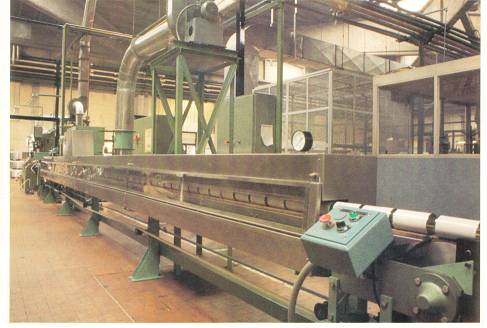
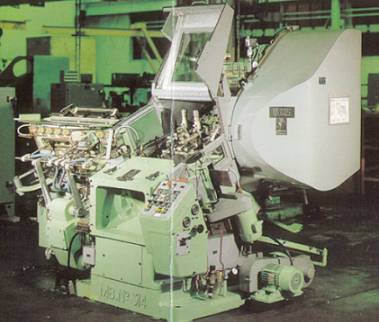
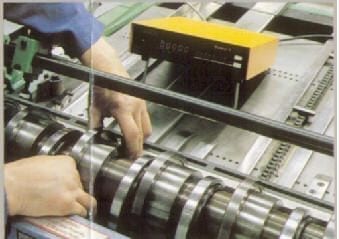




0 Comments